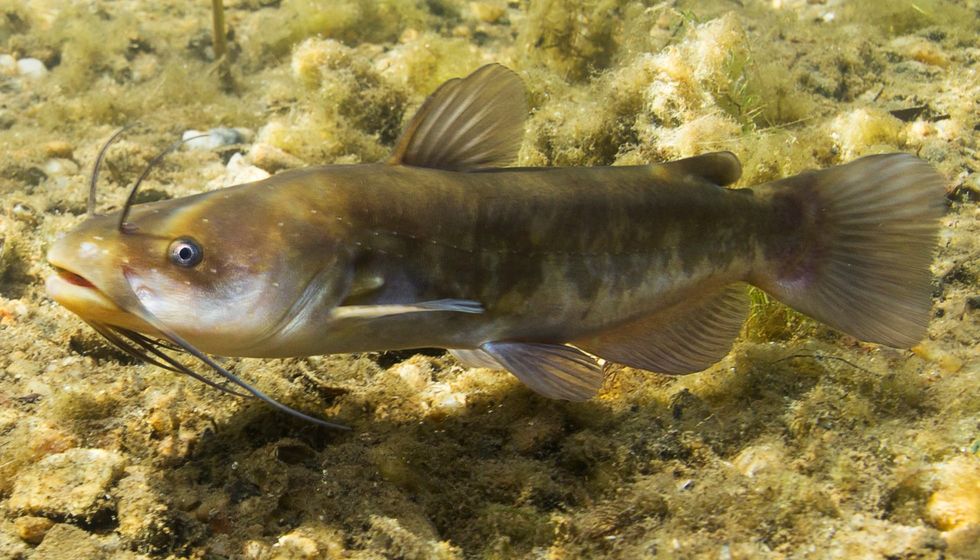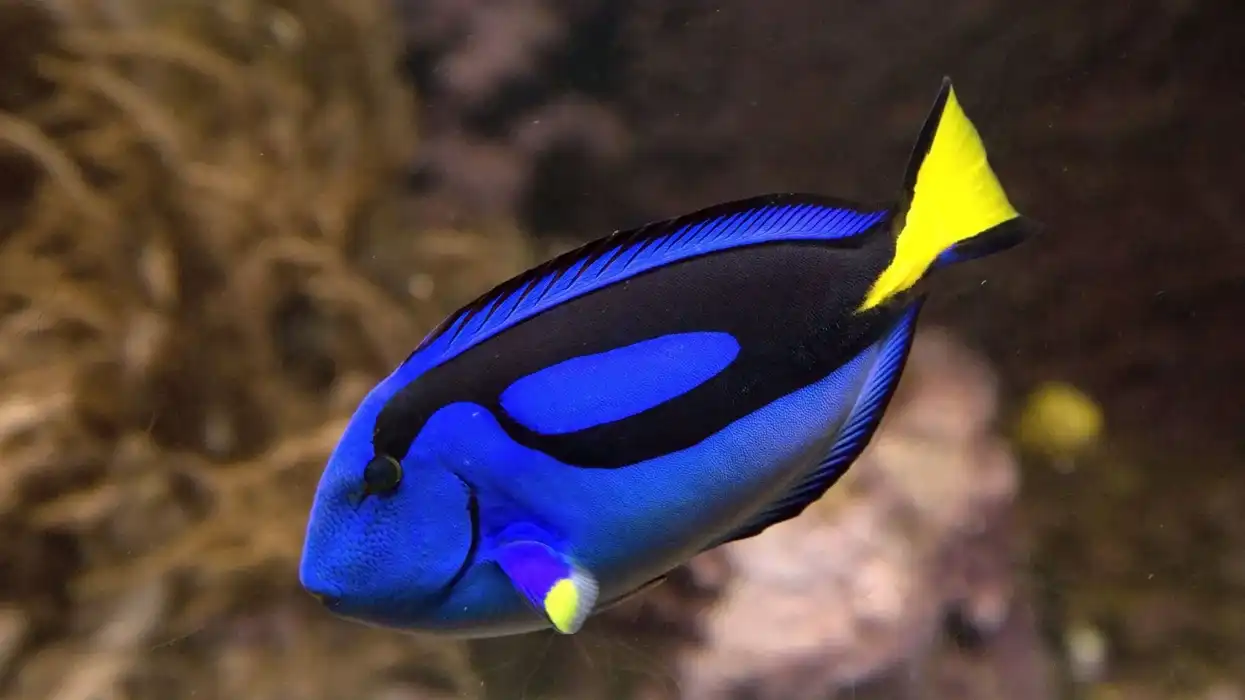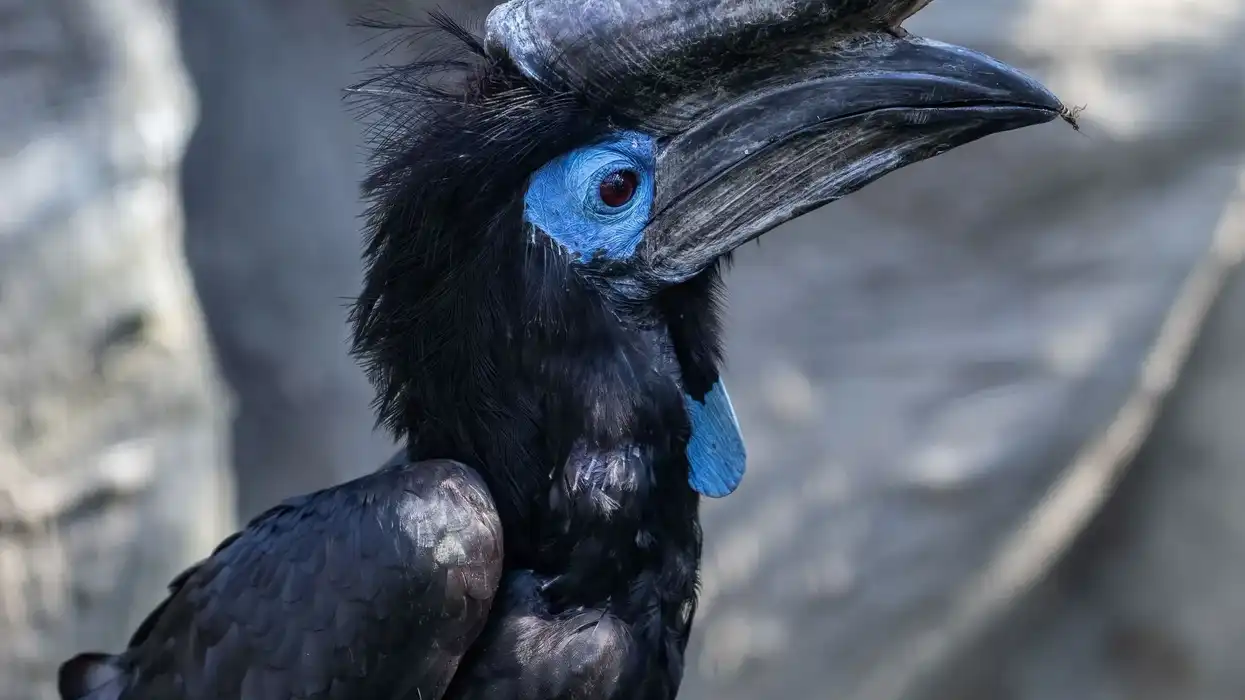Have you ever seen a fish without scales and with barbels (like whiskers) on its mouth? If you go fishing often, then you just might have!
The brown bullhead catfish is a common game fish used in sports, and it is said that it tastes awesome when smoked! The brown bullhead (Ameiurus nebulosus) is found quite abundantly across multiple continents and is also known as the common catfish.
This species can withstand high water temperatures and low oxygen levels, hence they are not considered as good indicators of the quality of water.
This species is native to North America with its distribution ranging from New Brunswick in the north to Louisiana in the south. Brown bullhead catfish's scientific name is Ameiurus nebulosus and they belong to the family Icteridae.
Brown bullheads (Ameiurus nebulosus) are commonly found across the Atlantic and Gulf coast drainages along with sporadic appearances in the Mississippi drainage. As these fish have now been introduced beyond their native range as well, they can be found throughout New Hampshire as well.
Aren’t you interested to know more about this fish? Here are a few fun facts about the brown bullhead fish that will sate your curiosity. After reading these interesting brown bullhead facts, do check our other articles on the black dragonfish and the walleye fish.
Brown Bullhead Interesting Facts
What type of animal is a brown bullhead?
Brown bullhead fish is a catfish. These bullheads look a lot like a cat, and that’s why they are referred to as catfish. Bullheads like to live among other fish in the sea where they can get their prey.
What class of animal does a brown bullhead belong to?
Ameiurus nebulosus, the brown bullhead, belongs to the Actinopterygii class. These bullheads come from the Icteridae family.
How many brown bullheads are there in the world?
According to the Michigan Department of Natural Resources in the state of Michigan, there are millions of brown bullheads in the world, and their abundance has made them a common game fish, which is caught by humans for sport and is either eaten by humans or used for feeding other animals.
This species can be found in lakes, ponds, and slow-moving streams across the state of Michigan.
Where does brown bullhead live?
Southern brown bullhead catfish live in wetlands, ponds, and lakes. It is known to live in any non-flowing freshwater body and also in swamps and murks. These fish thrive in water bodies where their favorite diet, worms, are easily available.
What is a brown bullhead's habitat?
Brown bullhead fish wildlife habitat comprises sluggish streams, ponds, and lakes. It can also survive in water bodies with very low concentrations of oxygen.
Who do brown bullheads live with?
Brown bullheads live in schools of fish but are often found alone too. If they live among other fish, then they can catch their prey with ease.
How long does brown bullhead live?
The average life cycle of a brown bullhead is around five to eight years. Although, when the brown bullhead is held captive and under surveillance, it is recorded to have lived up to fifteen years.
How do they reproduce?
For reproduction, the brown bullheads should be three years of age at least. The female bullhead lays eggs in shallow water and the male externally fertilizes them during the breeding season.
After the reproduction process is over, it takes between six and 13 days for the eggs to hatch. Female brown bullheads can lay up to 10,000 eggs in their lifetime.
What is their conservation status?
The brown bullhead catfish do not face any sort of extinction threat and can be found in abundance. Hence, they are under the status of Least Concern. This is the reason that this species is extremely popular for fishing among anglers.
Brown Bullhead Fun Facts
What do brown bullheads look like?

Brown bullheads have a dark brownish-green dorsal region, and their bellies are cream in color. They have barbels on their mouth and spine.
They have two dorsal fins, one anal fin, one adipose fin, and pelvic fins. They are smooth-skinned and have no scales. There is a short yet stout spine on the edge of their dorsal and pectoral fins.
How cute are they?
The brown bullhead catfish can be termed as rather cute due to their smooth skin and calm appearance. The fins and barbels can only add to their cuteness. This species is generally harmless to humans.
How do they communicate?
This species communicates using soundwaves in water, and their barbels can detect chemical changes in water through touch. The barbels are present on the chin and lower pelvic spine of the brown bullhead catfish.
How big is brown bullhead?
The brown bullhead catfish size is in the range of 7.9-19.7 in (20-50 cm). Hence, the brown bullhead's size is around five times smaller than a common dolphin. Hence, a brown bullhead catfish can be considered of normal size and is neither too big nor too small. It is just the perfect size for fishing.
How fast can a brown bullhead swim?
A brown bullhead can swim at a speed of 1mph when measured for a short time interval. When this time interval is prolonged, the speed is known to be increased to around 4mph at best. Hence, the brown bullhead catfish can be considered a rather quick swimmer.
How much does a brown bullhead weigh?
A brown bullhead's range of weight is around 1.1-7.9 lb (0.5-3.5 kg). Hence, their weight is on the lower side, and they do not weigh much, which makes them ideal game fish for fishers. The record size for brown bullhead is 7.37 lb (3.3 kg) which is much higher than the average brown bullhead.
What are the male and female names of the species?
Both the male and female scientific names of the species are the same which is Ameiurus Nebulosus, and there are no different names.
What would you call a baby brown bullhead?
A baby brown bullhead is simply called a baby brown bullhead.
What do they eat?
Brown bullheads are bottom-feeders and can eat both animal and plant matter as they are omnivores. They are known to feed on insects, leeches, algae, worms, and other smaller fish species. They are also occasionally known to eat their eggs.
Brown bullheads are preyed upon by predators like water snakes and bigger fish. They are also eaten by snapping turtles. Their biggest predators are humans who catch them for recreational purposes and are known to eat them as well as use them as food for other pet animals.
Are they eaten by humans?
Brown bullheads are predominantly known to be eaten by humans on a large scale. Fishing is a recreational activity for human beings, and, owing to the abundance of brown bullhead catfishes, they are caught and eaten all over the world. Fishing competitions are held where the catfish are caught and prepared to be eaten as a sport.
Would they make a good pet?
Yes, brown bullheads would surely make a good pet. Their requirements are pretty low, and they can survive in very low concentrations of oxygen and high concentrations of carbon dioxide.
All the owner of the pet has to have is a normal-sized aquarium, and it is possible to have multiple brown bullheads as pets.
Brown bullheads are cute and harmless to humans, so they are perfectly suitable and make a good pet for a household. But before you get a brown bullhead fish as a pet, do acquire some knowledge about brown bullhead care.
Did you know...
Bullheads usually prefer to search for food at night and are hence an easy target for other bigger carnivore fishes that prey on the brown bullhead. These catfish have been known to bite human beings upon being caught, which causes a burning and stinging sensation in the human’s skin, due to the poison in the bite.
However, these fish are harmless to humans, and this poison does not have any other negative effects on the person who is bitten.
When you compare brown vs black bullhead, there are some subtle variations in the appearance that will help differentiate between the species. The black bullhead has entirely black or dark grey whiskers while the brown bullhead's whiskers have black tips and are gray/whitish at the base.
Differences Between A Yellow and Brown Bullhead
When you compare yellow bullhead vs brown bullhead, there are several differences that you can notice. A yellow bullhead has light chin barbels which are yellow or white whereas a brown bullhead has darker chin barbels.
Also, the yellow bullhead is known to have 23-27 anal fin rays, whereas the brown bullhead has around 19-24 anal fin rays. The eyes of the yellow bullhead are slightly bigger than those of the brown bullhead.
What does a brown bullhead use its barbels for?
The barbels are mainly used to find food as the brown bullhead cannot see clearly in the dark waters due to its poor eyesight. The barbels can detect proteins that float in water. Hence, the barbels aid the catfish considerably in searching for prey.
Here at Kidadl, we have carefully created lots of interesting family-friendly animal facts for everyone to discover! Learn more about some other fish including the cherry barb and the Congo tetra.
You can even occupy yourself at home by drawing one of our brown bullhead coloring pages.










